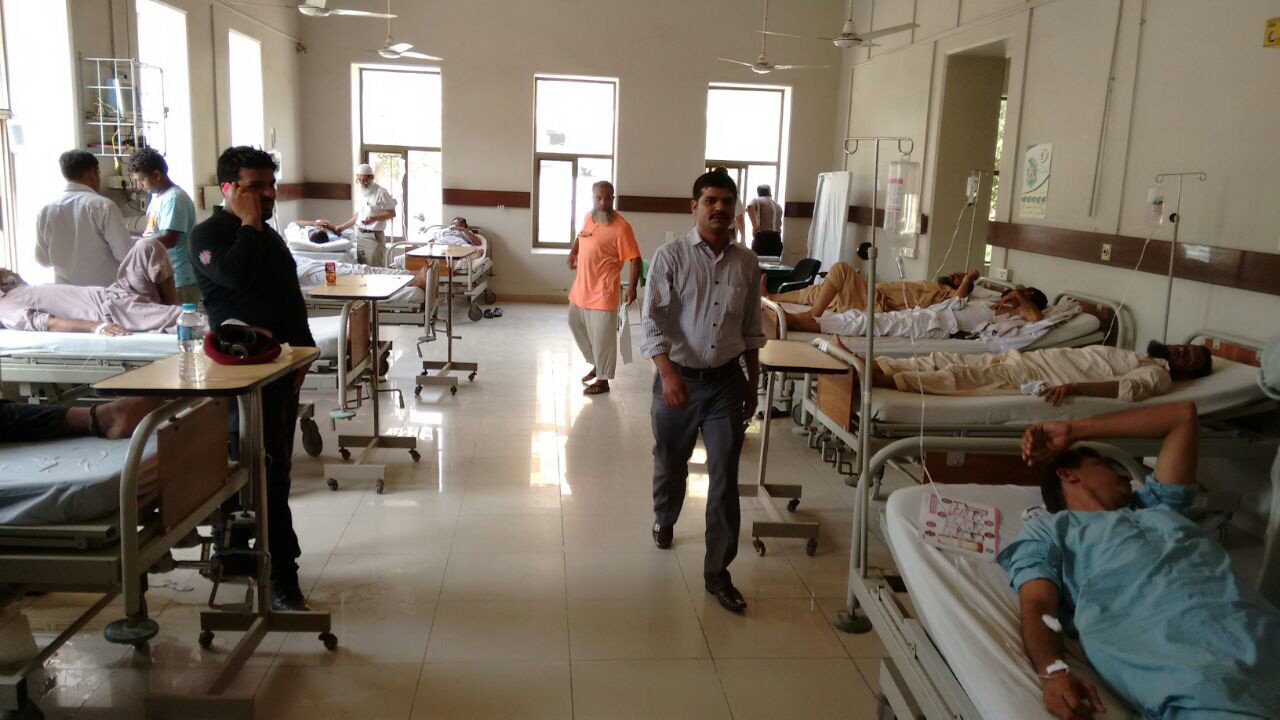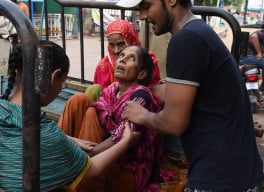
KARACHI:
The doctors who are treating an unprecedented number of heatstroke patients in the unforgiving heat of Karachi feel many lives could have been saved had people known how to administer first-aid.
"The main reason behind the deaths is because people are unaware of the precautions and initial medical aid," said Indus Hospital's communication and resource development manager Saqib Zeeshan as he distributed chilled water bottles and juices among the attendants waiting in the park outside the health facility. "In my life, I haven't experienced any situation like this in Karachi."
According to the head of Indus Hospital's emergency department Syed Ghazanfar Saleem, heatstroke is not the first and final stage, but it is the third stage and can be prevented if the patient knows what to do.
Heat stroke is actually the third phase of the ailment, said Saleem, adding that a patient or his attendant should start to worry when they feel heat cramps or heat exhaustion. "Every patient who is suffering from heatstroke has gone through the earlier two phases of cramps and exhaustion, which causes nausea, vomiting, rashes and dizziness," he said.
If someone in your house or neighbourhood complains of redness across their body or they faint, take them to a doctor, keep them hydrated and give them ORS instead of water so that the body is able to maintain body salts, he advised. "The age bracket, which is mostly affected by heat, is toddlers or old people who are more than 50 years old," he added.
Saleem admitted that a majority of the people who came for treatment had no idea what to do with the patient on the way to the health facility. "You can give them ORS, remove unnecessary clothes and sponge them with a wet towel on their face, underarms, thighs and neck," he said.
A heatstroke patient can never be treated at home and should be taken to a hospital as soon as possible. "Heatstroke is a medical emergency when the temperature of the body rises up to 41 degrees or 106 Fahrenheit," he explained. "A patient takes around 12 to 24 hours to reach normal temperature, which is 36 to 38 degrees. Their temperature should be checked frequently and they should be kept under a fan or an air-conditioner."
The protocol at the hospital is also simple. "When any patient comes to us, we first try to keep him hydrated," said the doctor. For the toddlers and elderly, the doctors insert a tube through their nose, mouth or the urinary track to their stomach to water the body.
As Indus Hospital received a large number of patients from Ibrahim Hyderi, Korangi, Landhi and other nearby areas, its administration decided to convert its three general wards into air-conditioned emergency wards. "We have discontinued all OPD's and converted them into emergency wards to make more space for heatwave patients," said Zeeshan.
Since Sunday night, these doctors have treated nearly 900 patients who suffered from heatstroke. The total number of casualties at Indus was 43, out of which 19 were dead on arrival.
Published in The Express Tribune, June 26th, 2015.



























































COMMENTS (1)
Comments are moderated and generally will be posted if they are on-topic and not abusive.
For more information, please see our Comments FAQ